- 02 9712 1736
- [email protected]
- 212 Great North Road, Five Dock, NSW 2046
- Open 7 days a week
If you’re asking ‘lower back pain what are the common causes,’ you are not alone. Many people suffer lower back pain and are asking the same question. Causes range from acute strain to chronic diseases, and pinpointing them is crucial, for the best treatment. This article helps remove the guesswork, guiding you to understand the common causes of lower back pain and providing valuable insight into best the best management of lower back pain.
Lower back pain is a leading cause of disability worldwide, with common causes including accidents, heavy lifting, age-related degeneration, and arthritis disorders, potentially leading to symptoms like pain, numbness, or weakness.
Acute lower back pain typically lasts a few weeks and often resolves without intervention, while chronic back pain persists for over 12 weeks, can severely impact quality of life, and may be due to issues like disc problems, joint degeneration, and nerve root irritation.
Preventative measures and home treatments for managing lower back pain include maintaining proper posture, regular physical activity, applying cold and heat therapy, and over-the-counter medications. While professional care may involve physical therapy, injections, and alternative therapies like acupuncture.

The prevalence of lower back pain, a nagging discomfort or achy pain in the lumbar spine, is staggering. It affected 619 million people globally in 2020 and is expected to impact 843 million by 2050. With such a significant number of people effected this musculoskeletal condition has claimed the unwanted honour of being the leading cause of disability across the world. Therefore, worldwide getting a better understanding of lower back pain is important.
Well the causes are numerous. Some common triggers include:
Accidents
Falls
Heavy lifting
Age-related degenerative changes
Inflammatory arthritis disorders
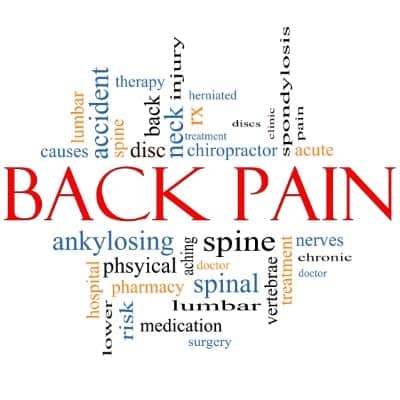
These risk factors, among others, can all trigger the debilitating symptoms of back pain.
Some of the symptoms to look out for are pain, pressure, discomfort in the lower back region and, in severe cases, weakness, burning sensation or numbness in the legs.
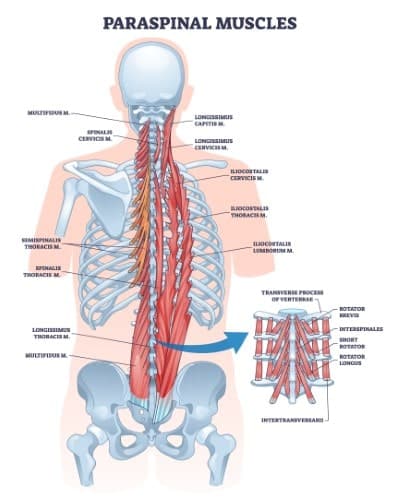
The lumbar spine, a crucial part of the spinal column. It provides support for the whole torso region of your body and when examined closely you quickly realise it is a complex structure and really a marvel of nature’s engineering. It’s made up of various components like:
Discs
Muscles
Ligaments
Tendons
All working in harmony to provide critical support and flexibility to your upper body. However, this vital function also makes it vulnerable to wear and tear over time, leading to lower back pain.
Mechanical or structural problems within the spine often result in lower back pain, including issues with the intervertebral discs, spine alignment, and nerve compression.

Lower back pain is not a uniformly experienced discomfort. You could experience acute pain, lasting less than a few weeks. Through to chronic pain, which persists for more than 12 weeks. Chronic pain extends beyond the body’s natural healing process and requires professional intervention. The majority of low back pain cases are non-specific, meaning they are not caused by one structure, for example a fracture. Non specific back pain accounts for about 90% of all cases, and most instances of acute low back pain resolve without intervention. However, this is not the case for all.
In contrast, chronic low back pain, a form of chronic pain, can significantly hinder an individual’s quality of life, resulting in limitations to daily activities and work. Disc problems, joint issues, and irritated nerve roots are common culprits behind chronic low back pain.
Consider experiencing an unexpected twist while lifting a heavy object, or a sudden awkward movement during a game. These incidents are the common triggers of acute muscle strains. An acute strain damages your muscles, tendons, or ligaments, which leads to lower back pain and discomfort. But it’s not just sudden injuries, which cause damage. Chronic muscle strains can result from repetitive movements that gradually overstretch or tear muscles. These types of strains, are frequently seen in individuals with physically demanding jobs or athletes.
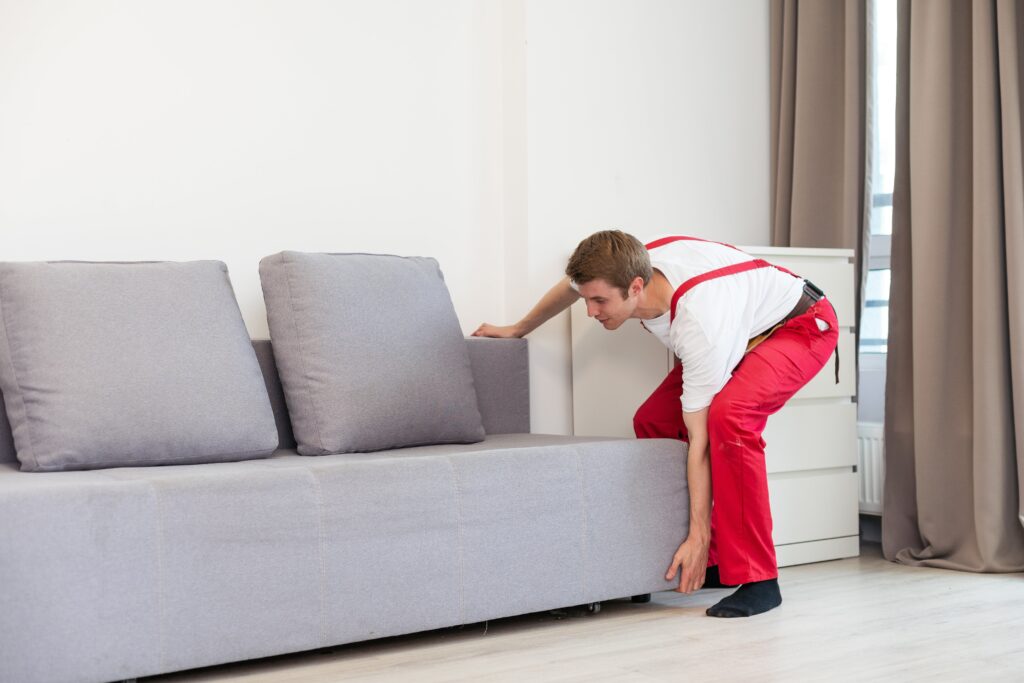
Muscle sprains or strains in the lower back can cause symptoms such as pain, stiffness, and muscle spasms. These can often make movement and daily activities uncomfortable. Leading you to change your actions creating not only the original pain, but further pain and discomfort in associated regions of your body. Managing such injuries often involves rest, anti-inflammatory medications, physical therapy, and application of ice or heat. If you are concerned about your lower back pain and the correct management approach, reach out to a local health professional to assist you.
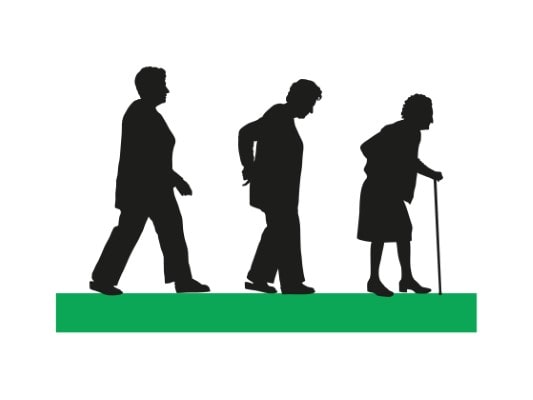
Unfortunately as many of us know, various degenerative changes occur in the body as we age. The spine is no different. Osteoarthritis and degenerative disc disease are common causes of chronic lower back pain. Over time, the loss of hydration in intervertebral discs can lead to:
Tears and weakening
Herniation or collapse
Stenosis
Chronic back pain
Individuals around 50-55 years old, particularly women, commonly experience degenerative changes in the spine. This can be impacted by your occupation and lifestyle, however natural aging leads to degenerative changes occurring around this age. Arthritic conditions are common as we age. For example ankylosing spondylitis, a type of arthritis, can cause inflammation and possibly lead to fusion of vertebrae, creating chronic back pain. However, the most common type of arthritis is osteoarthritis, a non-inflammatory arthritis which leads to stiffness and pain around your spine and joints. As time goes by, if left untreated, you will begin to experience chronic pain as your nervous system adapts to your decrease in mobility. Learn more about chronic pain.
What is a herniated disc? Picture a jelly doughnut. Now imagine if the jelly starts to leak out of the centre – that’s similar to what happens with a herniated disc. A tear in the disc’s tough outer layer allows the inner cartilage to protrude outward. When the inner jelly-like cartilage reaches the outer third of the tough outer cartilage, you will experience significant pain. When the inner cartilage protrudes past the outer layer you may also experience numbness, weakness or pins & needles.
On the other hand, a bulging disc occurs when a portion of the disc’s circumference bulges out, affecting only the outer layer of cartilage. This may or may not produce symptoms. Unfortunately, all of us are different so for some patients they can expereince pain, while other experience no symptoms at all. Generally, herniated discs are much more likely to cause pain than bulging discs. This is because the inner cartilage protrusion can irritate or inflame nerve roots adjacent to the disc. However, it’s worth noting that disc displacements such as bulging or herniated discs can sometimes be asymptomatic and discovered only incidentally during imaging tests for other conditions. So if you are experiencing back pain there are a number of possible causes.
Spinal stenosis is a serious lower back condition which can affect people as they age. In the condition of spinal stenosis, the spinal canal narrows. This is usually due to a build up in bone around your joints or spinal canal. This decreases the space which nerves have to travel through, which puts pressure on nerve roots leading to lower back pain and potentially sciatica. Individuals with lumbar spinal stenosis may experience pain, sensory disturbances, and motor weakness, typically exacerbated by walking or standing.
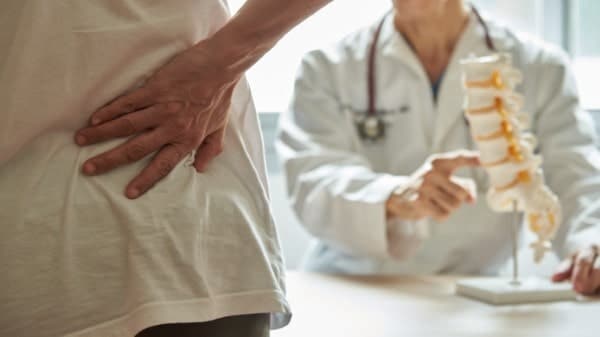
Bone spurs, often developing due to arthritis of the spine, can contribute to the narrowing of the spinal canal, leading to spinal stenosis.
Maintaining good posture involves more than just standing tall. It involves keeping each body part aligned with its neighbouring parts, in a balanced and supported manner. By focusing on your posture you are preserving the health of your back and spine. Poor posture, on the other hand, can lead to:
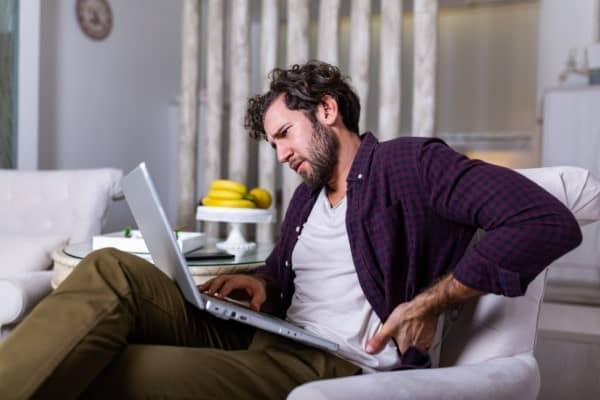
Restricted blood vessels and nerves
Anatomical changes in the spine
Issues with muscles, discs, and joints
Unusual spine curvature
Associated pain and sensory changes
Maintaining good posture involves many muscle groups. For instance weak abdominal and back muscles can exacerbate posture issues, making the lower back more prone to injury. Learn about posture and how to have a good posture.
Arthritis does not only affect the hands or knees. It can also wreak havoc on your spine. Osteoarthritis of the spine is the result of wear and tear on your joints and spinal disc. This is natural part of aging, however, it still leads to inflammation, stiffness and pain. These symptoms are the result of your cartilage being broken down between your spinal joints, known as facet joints. The breakdown of cartilage in facet joints due to arthritis can lead to:
lower back pain
inflammation
stiffness
muscle spasming
the impingement of adjacent nerves, potentially causing sciatica.
Spinal arthritis symptoms commonly include back pain and neck pain. As well as stiffness, loss of flexibility, swelling, tenderness over affected vertebrae, and sometimes headaches and numbness in the limbs. As you can see the list of symptoms is quite extensive, therefore we always recommend looking after your body through out the years. To maintain your years spent in good health, as long as possible. This is known as your health span, and learning keys to maintain a good health span is important.
A healthy lifestyle which includes good nutrition and movement benefits more than just your heart or waistline. It can also keep back pain at bay. Excessive body weight can increase the load on your back’s joints, leading potentially to inflammation, pain and stiffness. Alternatively, maintaining a healthy weight can prevent and manage both acute and chronic back pain.

Regular physical activity is also important in maintaining good back health. Physical activity helps prevents muscle weakening, supports good posture, and maintains flexibility, all important for good movement. Another key part of physical activity is to regularly move throughout the day. This helps to prevent stiffness and discomfort associated with long periods of sitting.
A physical exam can also help identify any underlying issues that may contribute to back pain. You should have a general check up with your GP, yearly. Also avoiding activities such as smoking are beneficial to your back health. Smoking can lead to decreased blood flow and oxygenation to your spines muscles, tendons, cartilage and ligaments, thereby weakening the bones, muscles and other supporting structures, contributing to the risk of back pain.
Severe back pain can be a result of accidents or trauma. Acute fractures or dislocations of the spine can lead to immediate, severe lower back pain. For example if you have a fall backwards onto your coccyx, you may expereince a sudden sharp pain in your lower back. This may be the result of a vertebrae compression fractures which manifesting as severe pain and limited spinal mobility. Following any trauma, be aware of any new pains or discomforts and have them checked by a health care professional immediately.
Lumbar strain, which may result from sports that involve pushing, pulling, or sudden twisting, can damage tendons and muscles in the lower back, causing pain, spasms, and soreness.
Occasionally, the source of lower back pain may not reside in the spine at all. Conditions such as pyelonephritis, renal colic, endomitosis and abdominal aortic aneurysm are examples of non-spinal causes that manifest with lower back pain. A detailed patient history and physical examination that evaluates red flag indicators, are essential first steps in identifying non-spinal causes behind lower back discomfort. This will be performed by your health care provider at your initial consultation.
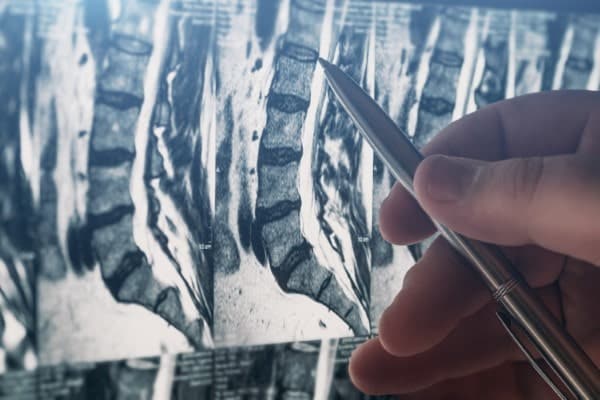
Several strategies can be employed at home to manage the discomfort when lower back pain strikes. Cold compresses or an ice pack can be applied immediately after a back injury to numb the area and reduce swelling, thereby alleviating pain. It is important after applying cold to remember to move within the ranges you are comfortable. This is important for blood flow and healing.
Starting approximately 48 hours after the onset of back pain, heat therapy can soothe aching muscles and promote blood flow, aiding in the healing process. Nonsteroidal anti-inflammatory drugs (NSAIDs) are effective in relieving acute back pain but should be used carefully and for short-term relief to avoid potential side effects.
The most important step in home treatment strategies is to move within the ranges you are comfortable. If movement is difficult, seek treatment from a local chiropractor, osteopath or physiotherapist.
Professional care should be sought when home treatment strategies prove insufficient. Rehabilitation through physical therapy is a critical element in the treatment and management of both acute and chronic low back pain, helping individuals resume activities.
As mentioned above chiropractors, osteopaths and physio deal with neck and back pain on a daily basis. However, other treatments such as acupuncture can be of benefit to. Acupuncture, may mitigate low back pain by facilitating anti-inflammatory responses within the central nervous system. If conservative physical therapist prove insufficient, epidural steroid injections, nerve blocks, and nerve ablations can provide pain relief and are often used in conjunction with physical therapy and medication.
The saying ‘prevention is better than cure’ rings true for lower back pain. Engaging in physical activities and exercise programs which strengthen your muscles and improves your flexible, all aid in your back’s healing and preventing future problems. With our ever increasing sedentary lifestyles, it is important to remember to make time for physical movement. A simple walk for 20 mins everyday is all it takes to help maintain your back health and help prevent back pain.
Another factor in maintaining back health and preventing back pain is maintaining proper posture. This includes both standing and sitting. Another, way to look after your back health is by achieving and sustaining a healthy weight, which reduces strain on the back and contributes to the prevention of back

In conclusion, lower back pain is a multifaceted problem with various causes and solutions. From maintaining a healthy weight to practicing good posture, the strategies to manage and prevent back pain are within your reach. Now, with a better understanding of the mechanics behind back pain, you can make informed decisions and take proactive steps towards a pain-free life.
The main difference between acute and chronic back pain is the duration: acute pain is short-term, lasting less than 6 weeks, while chronic pain persists for more than 12 weeks and extends beyond the body’s natural healing process.
Poor posture can contribute to lower back pain by causing restriction to blood vessels and nerves, anatomical changes in the spine, and problems with muscles, discs, and joints.
You can manage lower back pain at home by using cold and heat therapy, medication, movement and getting enough rest. These strategies can help alleviate the discomfort and promote healing.
Consider professional care options such as physical therapy, acupuncture, injections, and complementary approaches to address lower back pain. Chiropractors and osteopaths are experts in managing lower back pain and can provide a solution to your problems. These methods can provide relief and aid in the recovery process.
To prevent lower back pain, it’s important to engage in regular physical activity, maintain a healthy weight, and practice good posture. These strategies can help reduce the risk of developing lower back pain.
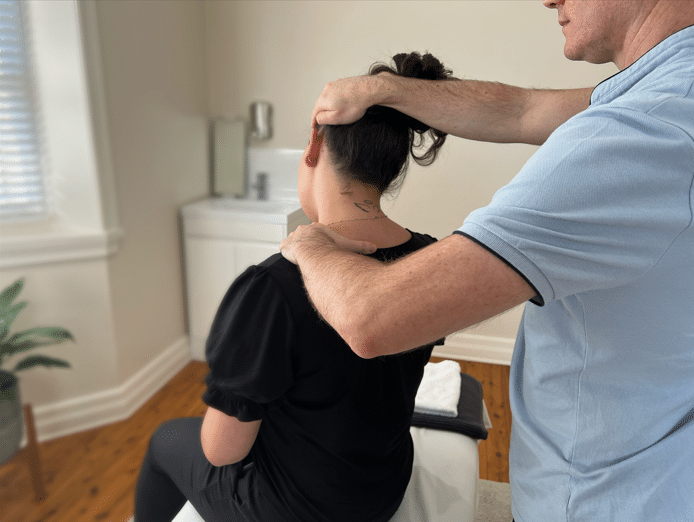
212 Great North Road, Five Dock, NSW 2046
Onsite parking available
Phone: 02 9712 1736
Email: [email protected]
Forest Lodge, Annandale, Glebe, Leichhardt, Balmain, Haberfield, Canada Bay, Rozelle, Rodd Point, Wareemba, Stanmore, Petersham, Lilyfield, Hunters Hill, Enfield, Cabarita, Mortlake, Rhodes, Burwood Heights, Birchgrove, Gladesville, Huntleys Point, Abbotsford, Ashfield, Croydon Park, Croydon, Chiswick, Russell Lea, Burwood, Strathfield, Concord, Drummoyne, North Strathfield, Liberty Grove, Dulwich Hill, Lewisham, Camperdown, Ashbury, Homebush, Homebush West, Woolwich, Henley, Summer Hill, Sydney Olympic Park

About
Five Dock Osteopathic & Chiropractic is located in Canada Bay, in Sydney’s Inner West. Servicing suburbs including Burwood, Croydon, Drummoyne, Five Dock, Haberfield, Concord, Abbotsford, Chiswick, Leichhardt, Wareemba, Russell Lea, Summer Hill, Strathfield.
Clinic hours
Monday, Tuesday, Thursday 7AM – 7PM
Wednesday, Friday 7AM – 6PM
Saturday 7AM – 2PM
Sunday 8AM – 2PM
Contact details